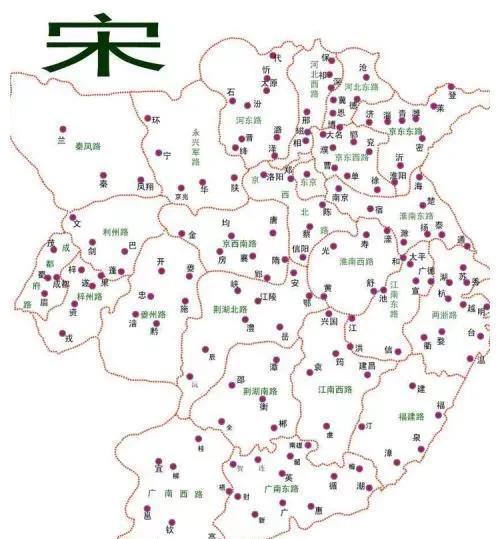In the hearts of many people, the Song Dynasty was a humiliated dynasty in China's history, and was often bullied by ethnic minorities in the north, especially the Liao State and the later established Jin State bullied the Song Dynasty the most.

Liaoguo
At the time of the establishment of the Song Dynasty, the Liao State was the most powerful enemy of the Song Dynasty, at that time, the Jin State had not yet been established, and they also belonged to the territory of the Liao people. The Liao state's harassment of the Central Plains did not begin in the Song Dynasty, this country, as early as the late Tang Dynasty, began to continuously invade the Central Plains, and their predecessors were khitans.
In most cases, they came and went in a hurry, but they only carried out harassment activities on the northern frontier of our country, and did not invade the Central Plains on a large scale as later.
In the last years of the Tang Dynasty, the entire Central Plains was a miasma of smoke, and the Tang rulers simply did not have the ability and energy to manage them anymore, and with such an opportunity, they developed rapidly.
At that time, the Liao people were mainly active in today's Mongolian land, some distance away from the Central Plains, and a large territory in the northeast was also under their rule.
With the demise of the Tang Dynasty and the chaos in the Central Plains, there were many warlords for a time, and the Liao state at this time also seized this opportunity and began to expand southward.
Not long after, there was an emperor in the Central Plains, he was Shi Jingyao, and the reason why he ascended to the throne was because of the support of the Liao people, and after he ascended the throne, he gave up the Sixteen Prefectures of Yanyun to the people of Liao, and got the Liao State of Yanyun Sixteen Prefectures, which had a considerable expansion in the land area and brought its power to the peak. Specifically, it is located in Sakhalin Island, the Outer Hing'anling Region, the three northeastern provinces, Inner and Outer Mongolia, and parts of northern North China.
Here to mention the Yanyun Sixteen Prefectures, many people may be vague about the concept of Yanyun Sixteen Prefectures, in fact, this location is quite important, because it includes Beijing, Tianjin, northern Hebei, northern Shanxi and other military fortresses, you know, most of the Great Wall is built here, the Great Wall was given to foreigners, which means that the gateway to the Central Plains is opened, allowing foreign enemies to invade. Once Yanyun was lost, later people wanted to take back Yanyun Sixteen Prefectures, including Later Zhou Chairong, Zhao Kuangyin, the founding emperor of the Great Song Dynasty, etc., but in the end they did not fulfill this wish.
Golden State
From the middle of the Northern Song Dynasty, the peak period of the Liao State passed, and the Jurchens, who were active in the area of today's Heilongjiang, quickly became stronger, and they were extremely dissatisfied with the long-term oppression of the Liao people, and after the completion of the Yan Aku to unify the Jurchen tribes, they established the Jin state regime and began to embark on the road of competing with the Liao state. Subsequently, the Jurchens began to contact the Northern Song Dynasty and tried to join forces to eliminate the Liao state.
The Emperor of the Northern Song Dynasty agreed to the Jurchens' request, and the two countries joined forces to eliminate the Liao State, and after the fall of the Liao State, most of the territory was occupied by the Jin State, and many Khitan people also volunteered to become Jin people.
However, there were also many Khitans who did not want to be ruled by the Jurchens, and under the leadership of Yelü Dashi, they went to present-day Xinjiang and Kazakhstan to establish the Western Liao regime.
After eliminating the Liao State, both in terms of strength and population resources, the Jin State had a qualitative change, and then they aimed the spearhead at the Northern Song Dynasty.
During the Jing Kang Disaster, the Jurchens directly captured the capital of the Northern Song Dynasty, Fenjing, and the Song Dynasty royal family was captured in the Jin Dynasty, and the Northern Song Dynasty was also declared dead. At this time, the Jurchens thought that they had overthrown the Song Dynasty court and destroyed the Song Dynasty, and they did not continue to go south, so king Zhao Zhuo of Kang ran back to the south and established the Southern Song Dynasty regime, but at that time, almost all the land in the north was in the hands of the Jurchens.
After the Southern Song Dynasty and the Jin Dynasty took huaishui as the boundary and obtained a large area of land in present-day Mongolia before the Liao state, the Jurchens obtained all the areas north of the Huai River in China, specifically in the northeast to Sakhalin Island, north to the Selenge River and the Shileka River in the middle of Mongolia, west to the Altai Mountains, and in the south to the Haihe River in Tianjin and Yanmen Pass in Shanxi Province, which was the territory of the Liao State in its heyday.